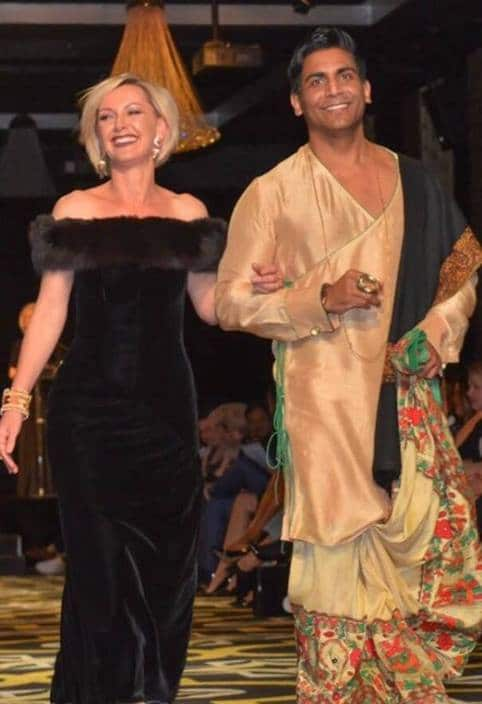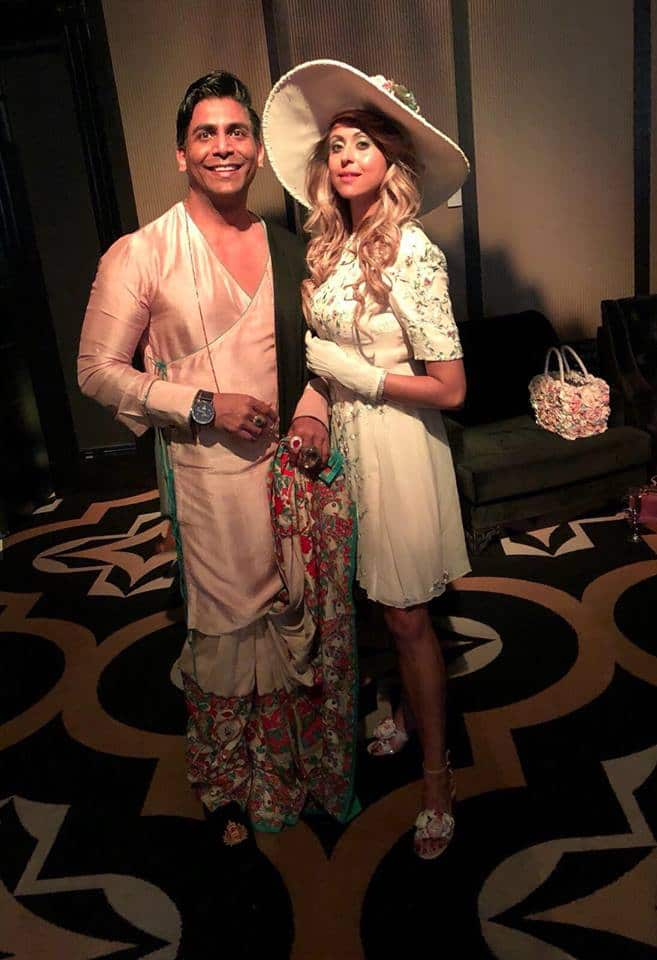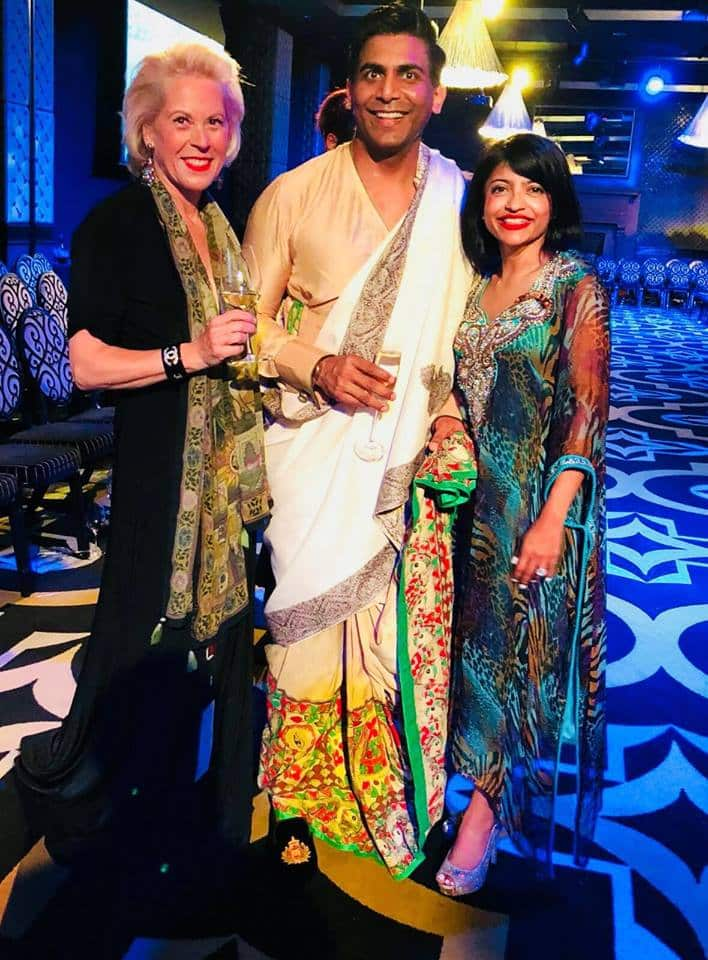'100 Years of Celebrating in Style' - a fundraising gala was organised recently in Sydney in aid of Dress for Success Sydney (Dfss) which is a charity organization. It seeks to improve the employability of women in need in NSW by providing them with professional clothing free of charge, a network of support, and career development tools to help them achieve self-sufficiency.
This year at the gala, Indranil Halder, an Ambassador for Fashion of Multicultural Fashion in Australia (FOMA), walked the ramp in his traditional dhoti and kurta (also called dhoti punjabi in Bengali) by designer Agnimitra Paul from Kolkata. He escorted Deborah Knight from Channel 9 on the catwalk who wearing a silk velvet fishtail gown by American designer Victor Costa. This glittering fashion event was organised by fashion anthropologist Charlotte M Smith. She recreated iconic moments of celebrations, through the century, in fashion history for this gala event. The themes of celebrations in this fashion show were diverse and ranged from the English Garden tea party to New Years Eve party at the Grand Hotel in Kolkata among others.
This glittering fashion event was organised by fashion anthropologist Charlotte M Smith. She recreated iconic moments of celebrations, through the century, in fashion history for this gala event. The themes of celebrations in this fashion show were diverse and ranged from the English Garden tea party to New Years Eve party at the Grand Hotel in Kolkata among others.
The traditional dhoti/punjabi set worn by Indranil Halder showcased the rich Bengal handloom heritage.

Indranil Halder and Deborah Knight (Brigitte Grant/Dress For Success Sydney) Source: Brigitte Grant/Dress For Success Sydney
Indranil Halder told SBS Hindi that he was very happy that he was able to wear a Dhoti for this event.
"My catwalk with Deborah was shown on national television. This was the first time that a man wearing a dhoti was on the catwalk (in a mainstream Australian fashion show). This was a very proud moment for me," says Indranil.
Mainstream Australian fashion has more to do with the European style of clothing and Indranil Halder says that he felt really good that one could see the Indian style of dhoti punjabi (dhoti kurta) in the fashion show. "The dhoti that we wear and other traditional dresses from our motherland, they have a presence, a story, a different presentation. Wearing that we can tell the rest of the world, what a wonderful cultural heritage and what a colourful heritage India has. And it is time now to celebrate this heritage especially in Australia."
"The dhoti that we wear and other traditional dresses from our motherland, they have a presence, a story, a different presentation. Wearing that we can tell the rest of the world, what a wonderful cultural heritage and what a colourful heritage India has. And it is time now to celebrate this heritage especially in Australia."

Source: Indranil Halder
Fashion anthropologist Charlotte Smith told SBS Hindi how it all fell into place.
"This year we decided on doing 100 years of celebrating in style, so I looked at each decade and chose a particular type of party or something that people celebrated in that decade and then dress my models in the clothing from my collection to tell that story." Chaorlotte Smith started from the 1900’s with the Edwardian house party and worked through each decade. She is also an ambassador for FOMA and thought to herself that she had the opportunity to choose a decade that might bring to life another country’s story of celebration.
Chaorlotte Smith started from the 1900’s with the Edwardian house party and worked through each decade. She is also an ambassador for FOMA and thought to herself that she had the opportunity to choose a decade that might bring to life another country’s story of celebration.

Charlotte Smith with Indranil Halder and Sonia Gandhi Source: Indranil Halder
"Through research I found that in the 1990’s at the Grand hotel, which is now an Oberoi hotel, in Kolkata, they were renowned for celebrating New Year's Eve among other party events at their discotheque called the 'Pink Elephant' and we could tell the story of what western women wore in the 1990s who were still living in India. So that’s how it all kind of started"
Ms Smith told SBS Hindi that she is pretty sure that this was the first time she had ever seen anything like that on a catwalk whether worn by a man or a woman when talking about predominantly western fashion. She feels that's why it was so spectacular with the audience totally delighted.
"I know that India is going to become very important in the world of fashion from now on," says Ms Smith
Indranil Halder strongly feels that cultural interactions and people to people contact will help in establishing greater bilateral relationships between Australia and India. He cites the recently released "India Economic Strategy" report by Peter N Varghese AO to emphasise this point.
"This report shows that over the next 20 years the only country that can bring opportunities for Australia through businesss is India. This report also focuses on three pillars, economic strategy, geo-politics and people to people contact. People to people contact includes areas like education, cultural heritage, fashion. All of these areas can bring people to people contact to a higher level, to the next level. This may enable us to develop relationships with Australians that perhaps the Government cannot establish."




